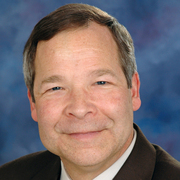How St. Luke’s CFO Succeeds at Revenue Cycle Management
- A successful hospital recognizes input reflects output when it comes to revenue cycle management. Highly effective performance initiatives regarding hospital care and management are often difficult to tangibly quantify but easy to recognize.

As the first of a two-part series, RevCycleIntelligence.com spoke with both Tom Lichtenwalner, Chief Financial Officer and Senior Vice President of Finance, and Rich Madison, Vice President of Revenue Cycle Management, at St. Luke’s Hospital to garner valuable insight into how the Truven Top 100 hospital manages its revenue cycle initiatives. The hospital was notably the only one in PA to earn the award.
The below conversation with Lichtenwalner offers a keen perspective on the hospital's cost-reduction objectives, efforts to enhance patient experience, and how planning to meet specific goals generates an effective revenue cycle output.
RevCycleIntelligence.com: In regards to the value-based care movement, how do you keep expenses low and quality high?
Tom Lichtenwalner: We address expenses on an ongoing basis. It’s not a one-time event we look at every couple of years. We have established Medicare cost-reduction initiatives, and our goal is eventually to break even on the Medicare side. Our thought is: if Medicare is our biggest customer, which it is — it’s probably 40 percent of our business — shouldn’t we at least break even? If you can’t make money off your biggest customer, it puts a strain on the rest of the organization.
It’s a tall order to get Medicare to break even but we’re making major strides, and every year we keep chipping away at the Medicare losses. We have established committees chaired by senior management, and each chair selects his or her committee members to look at certain pieces of cost: labor, benefits, supplies, drugs, consulting purchase services, managing type fees, etc.
RevCycleIntelligence.com: What process do you enact to help reach your goal of getting Medicare to essentially break even?
TL: We have a very robust process, so we meet monthly and have annual goals. Each senior manager reports monthly on actual progress vs. the committee’s goals so we always know where we are. Every quarter, this report is presented to both the board’s finance committee and to the board of trustees because it’s everybody’s concern to keep our costs down in today’s environment. We put a lot of effort into it and have been extremely successful, as is shown in our 100 Top scores.
We realize that going forward, the way to survive in the healthcare arena will be to pay close attention to high quality, market share, and cost. Every year, we will have to put more aggressive cost reduction in place throughout the network. It will continue to be a number one goal at the hospital.
RevCycleIntelligence.com: How do you best heighten the customer experience?
TL: We have become a large company, and yet I truly believe we haven’t lost the culture we have had among our employees which is very important. Every year, Richard Anderson, our President and CEO, asks his senior management team to come up with an easy-access initiative to make our care easier on our patients. That can be anything from helping patients find a department to parking signs to making registration or billing easier.
We report quarterly on how we are achieving those goals. That’s how important it is to our CEO that we are easily accessible to our patients. And that’s what it’s all about: having happy patients means we’ll be a successful health care system. Certainly we all have opportunities. We also look at the little things that maybe other hospitals don’t look at.
RevCycleIntelligence.com: How can hospitals maintain financial stability?
TL: As the revenue side and the reimbursement side are pressured more and more, the question becomes how we maintain financial stability. The answer is all about cost reductions and maintaining a low-cost structure, so we continue to work on that.
Becoming a larger network allows us more leverage on the purchasing side, so we dig deeper into our expenses to find opportunities. Recently, we put a consulting committee — myself and our COO — into place. Every manager who requests a consultant will have to fill out a form telling us why they need a consultant, how long they’ll need one, the cost, the expected return on investment, and how long it will be needed. We review it before approving it.
It’s one of the things we need to do because it’s going to get tougher and tougher to cut costs. We’re looking under every rock to find opportunities, but the key will be market share and growth.
RevCycleIntelligence.com: How do you best approach revenue cycle management compared to other Truven 100 hospitals?
TL: If reimbursements are going to continue to be ratcheted down, we’ll make some of that up on costs. But you have to look at it as a way to grow your business into new service areas, new markets, or both.
We’re looking at all of that. We’re looking strategically at where we should place new outpatient services or new healthcare lines of business to add to the more than 200 outpatient facilities we already have. For example, we’re growing our urgent care business which was fairly small until a couple of years ago.
However, as we broaden our spectrum of healthcare services we’ll examine the most effective ones and will consider stopping services that don’t do anything for the community and that do not support the financial strategy for the network. Adding services is good, but existing ones sometimes need to be restructured. The challenge for all hospitals will be to maintain financial stability.
